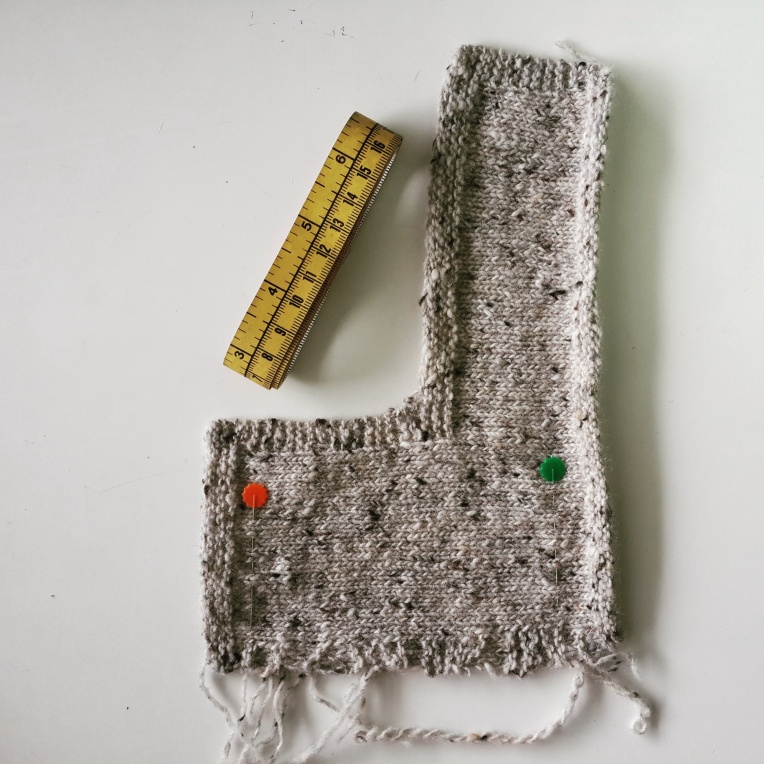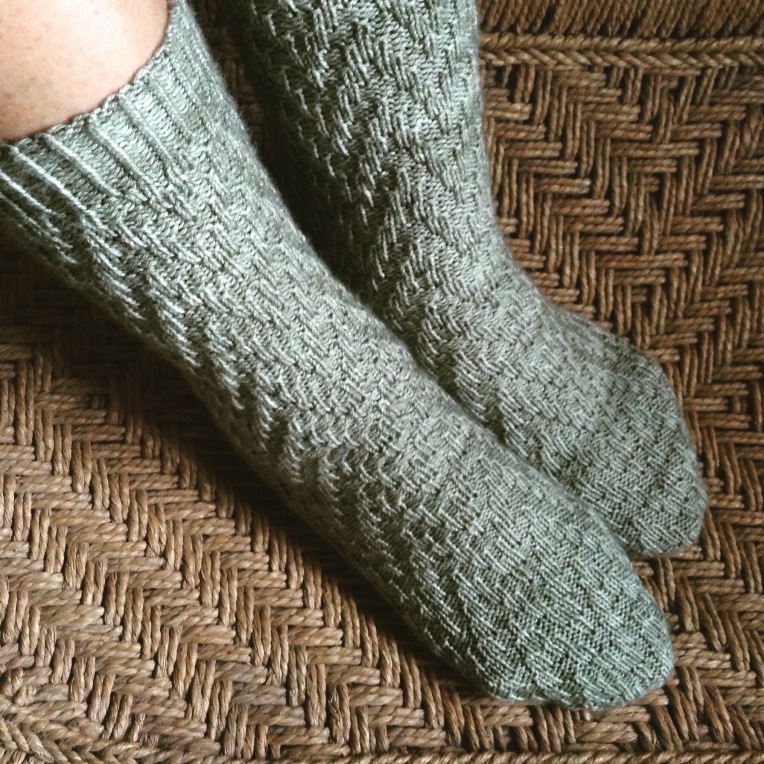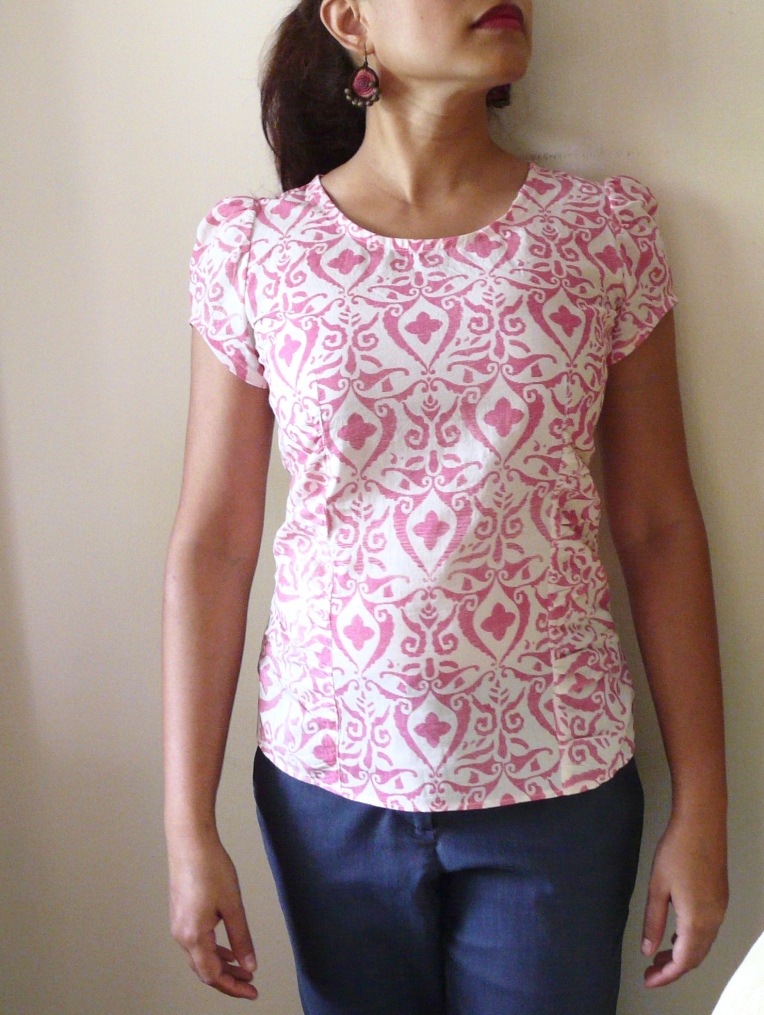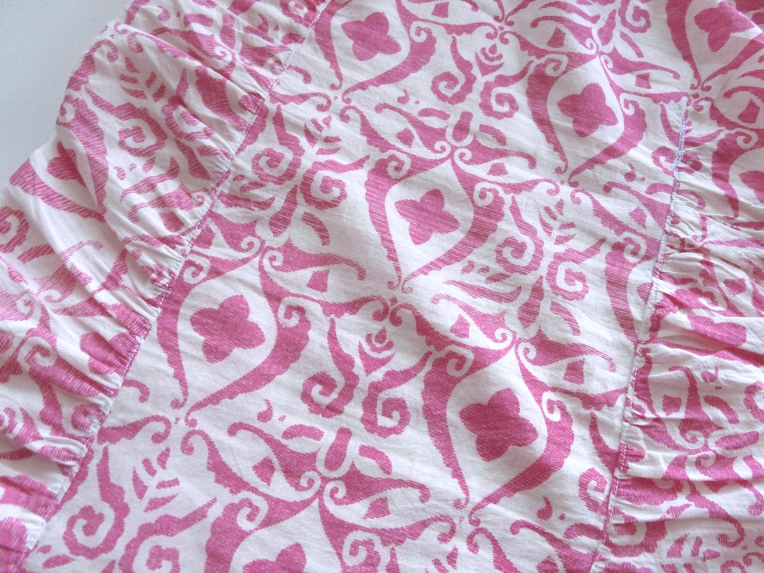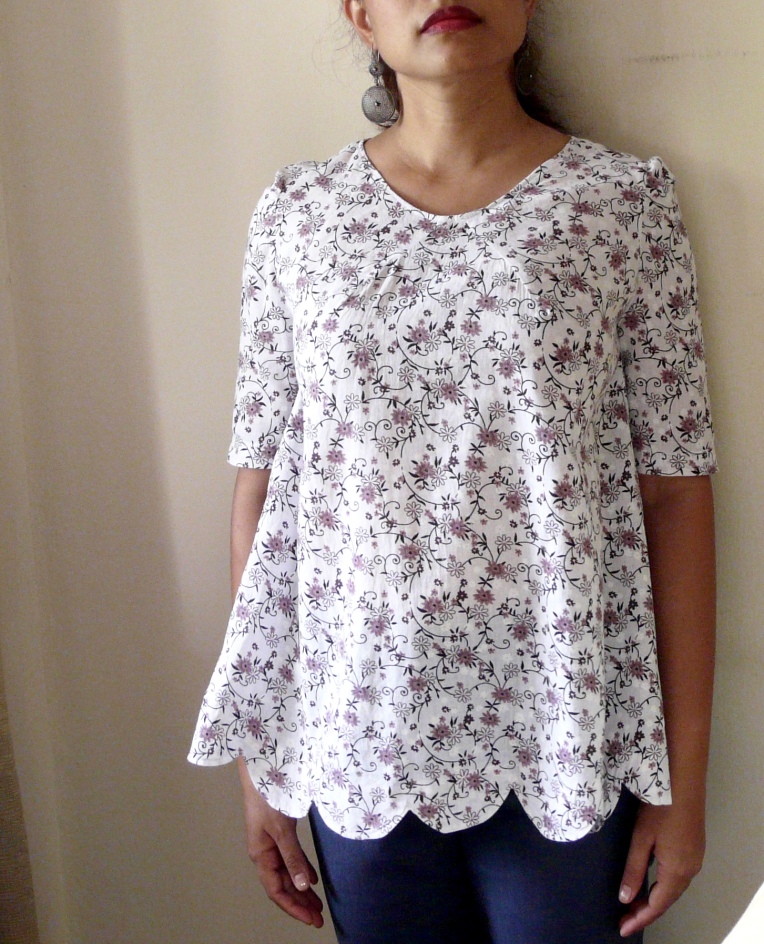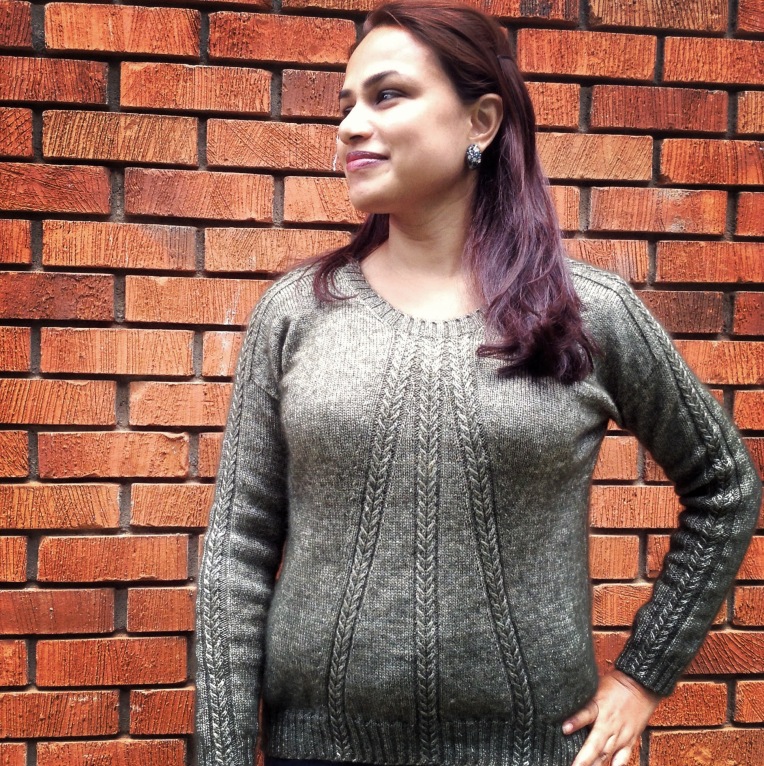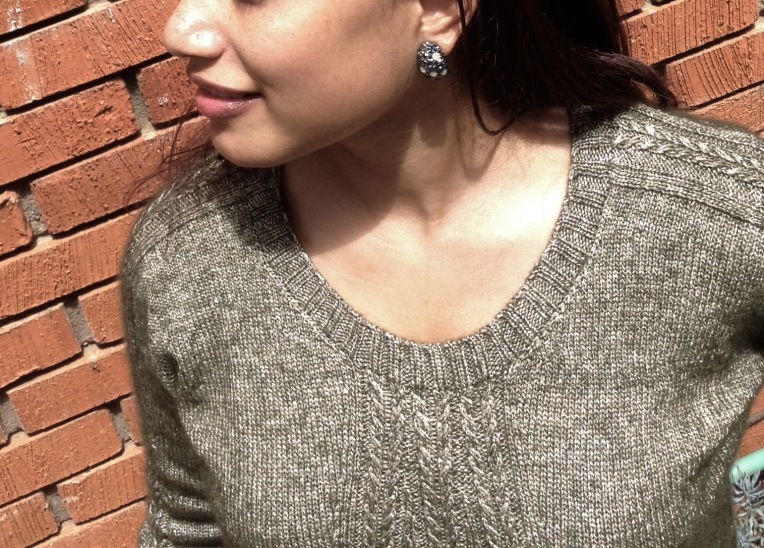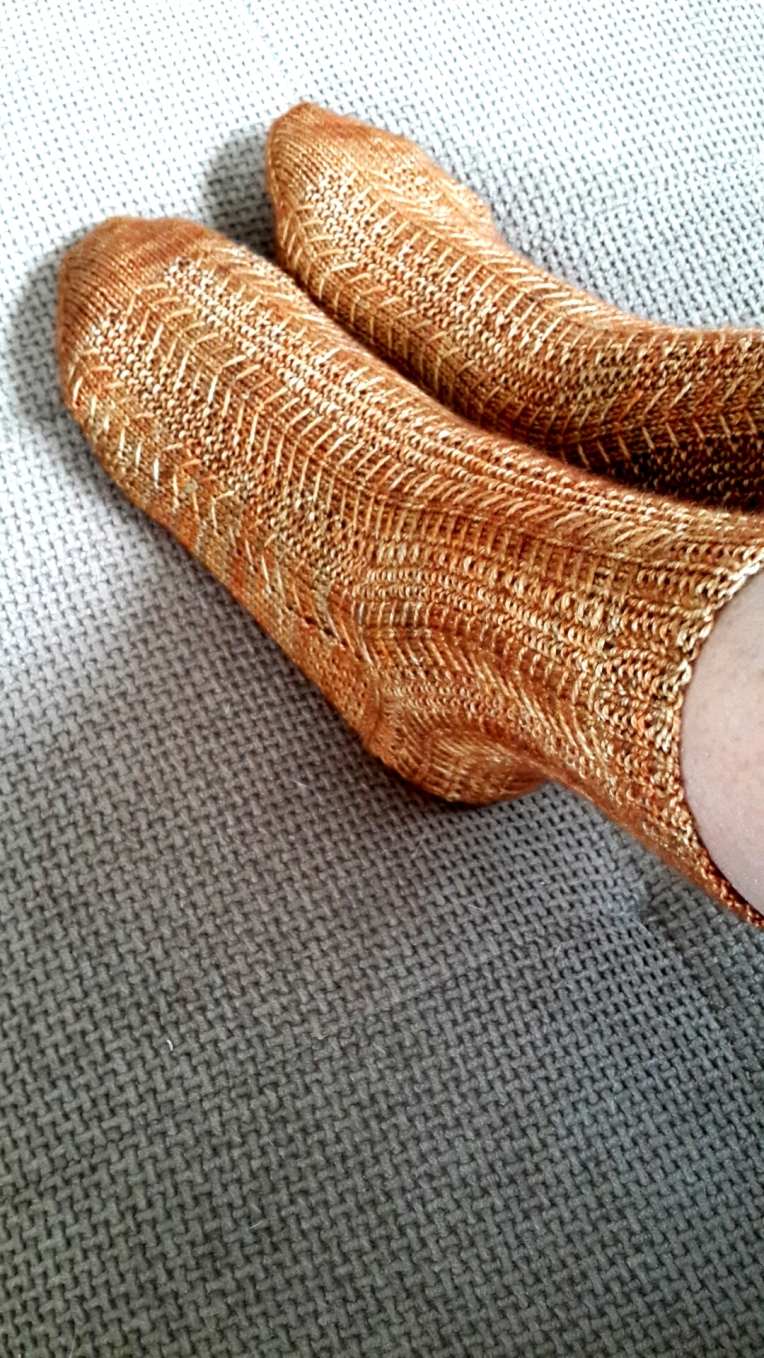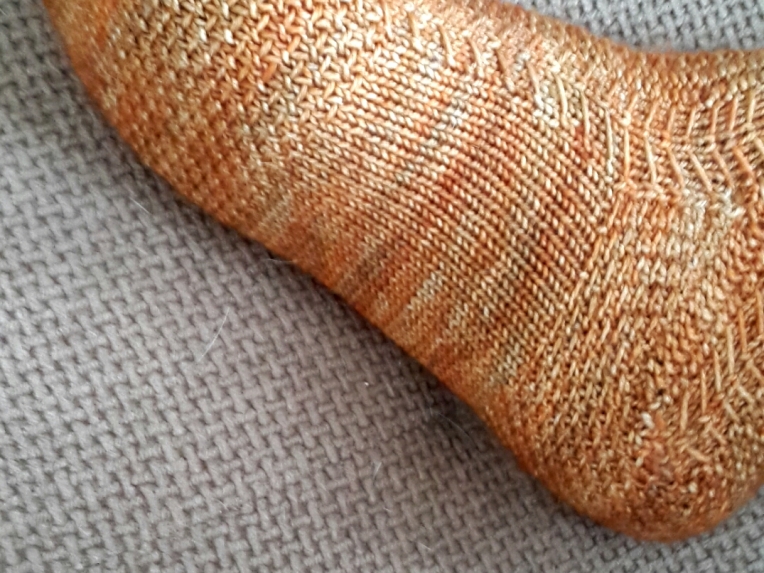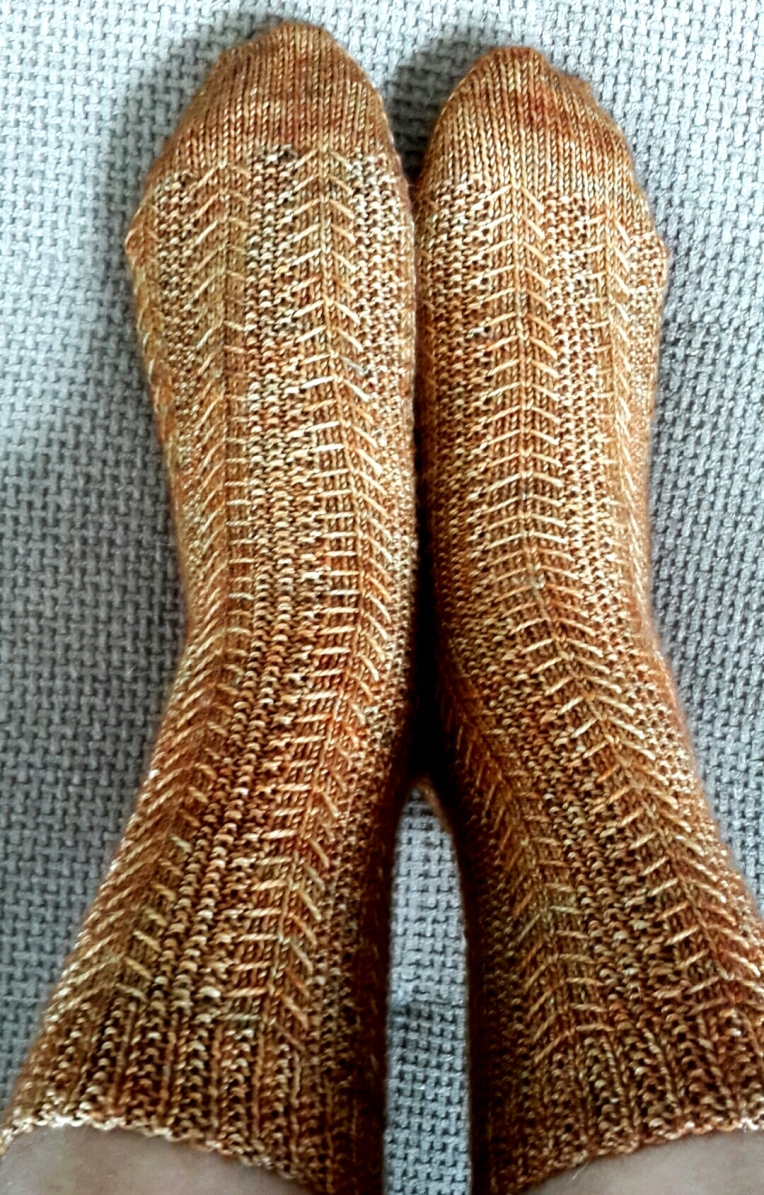I’m joining in the #fringeandfriendskal2016, are you? It’s the first time I’ve ever done a knit-along, and it came about because there is absolutely no pressure. There is no specified pattern, yarn, or designer, no Ravelry group or email list to sign up on, no pre-conditions of swatching. In other words: my kind of knit-along. I may have just mentioned here and there that a demanding job requires my knitting life be exactly the opposite. As soon as there are conditions attached to any knitting, I lose all interest. So this KAL is perfect! As long as it’s a sweater, worked top down, within the time frame, it’s a valid entry. I’m in!
What I really love about this particular KAL is the little condition that no existing patterns may be used. Knitting allows so much creativity and scope for customisation, it always dismays me to read of others who are too intimidated to modify a pattern. It’s just yarn! Make it do what you want to do!
Although the KAL does not allow an existing pattern, it certainly doesn’t dissuade you from having a plan — as detailed or on-the-fly as you like. Here’s mine:
Concept
I wanted an elegant pullover, with subtle patterning. Something neutral enough to wear incorporate into my existing wardrobe of colour, but not so boring that it looks like it came from RTW. Most of all, this needs to be a working sweater, not matter how beautiful, hence long sleeves (because if it’s cold enough for me to need woollens, it’s cold enough to need long sleeved woollens) and a scooped neck (I’m busty).
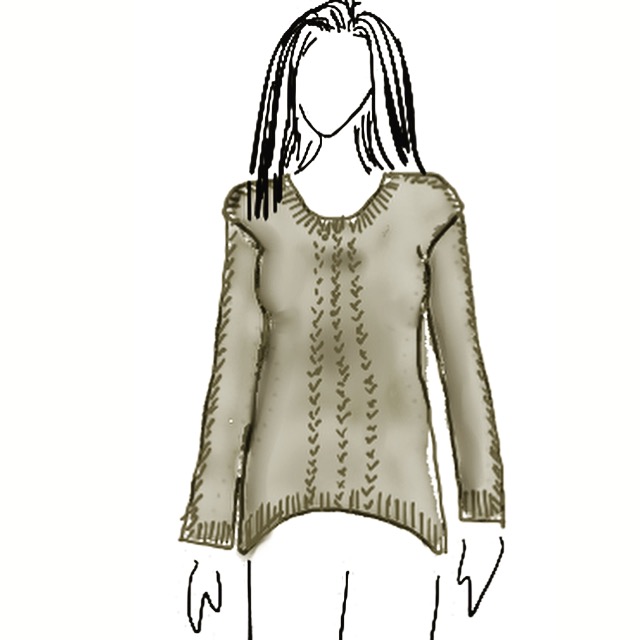
Yarn
Longtime readers will know that I love colour. Although I am (grudgingly) ceding to the need for a few neutrals to tie my colourful items together, I still cannot bear to wear a neutral colour, in a basic silhouette, which is also unfitted. Something’s got to give, and in this case it was the yarn. Yes it’s black/grey. But what a black/grey! A core of molten, metallic rayon, surrounded by a halo of mohair. It’s fluid and supple, yet warm and cosy. It’s good for winter parties and work meetings. It’s plain enough for the day but special enough for evenings. Basically, it’s perfect. (It’s also my first yarn love and the reason I joined Ravelry).
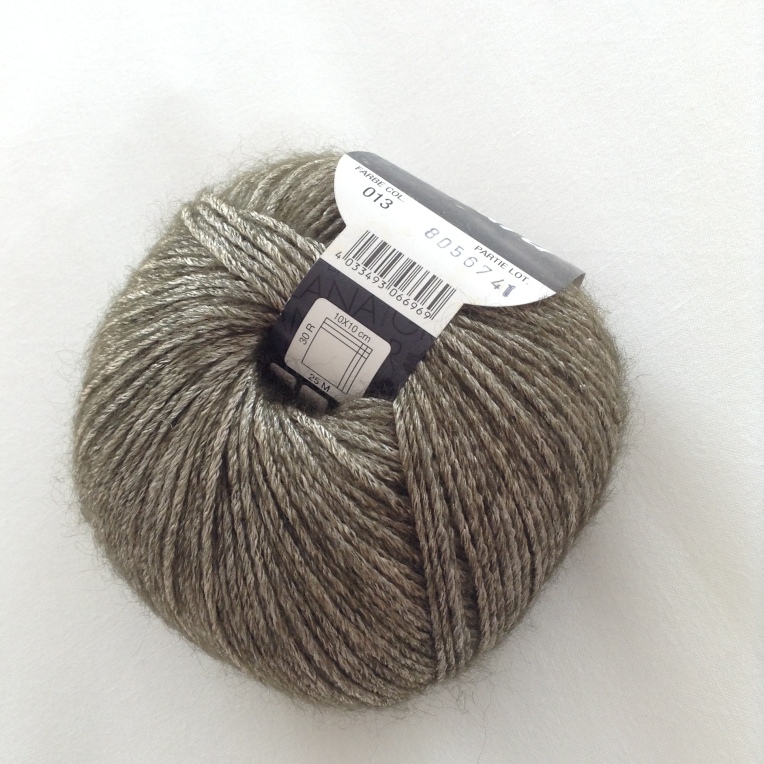
Design Details
I love modern dropped shoulder silhouettes. No ugly, bulky, 80’s shapes here — the fabric is drapey, shoulders are shaped and drop only a little bit past the shoulder, the neck is scooped, the sides are slightly flared and the hem is hi-lo. It is, in fact, to the exact dimensions of my Natsumi which fits perfectly, but this one is worked top down instead of side-to-side.
But a stockinette sweater still looks un-special, so there will be three narrow cables down the front, spreading apart gently. And once I’d decided that, how could I not have narrow saddles, with the same cables running from neckline to cuff?
Secrets of Structure
All great knits have structural secrets doing behind-the-scenes heavy work, while still looking effortless. Like gymnasts. Or great underwire bras. Or cantilevered bridges. My sweater will have:
– Increases, decreases and increases on the front. One set of paired increases and decreases will rapidly widen the triangular wedges between the pattern strips, without changing the overall stitch count. Another set of increases will gradually widen the sides, to match the back. In the exploded view below, the turquoise dots show the paired increases and decreases that separate the pattern strips. All orange dots show increases to shape the sides and neck openings.
I thought of having a single set of increases on the front do the double duty of widening the triangles and forcing the sides out to match the back, but was stumped by my deeply scooped neck which had a very small flat area at the bottom of the ‘U’. Barely 20 stitches, which was not enough to contain the pattern strips and their separators. So my pattern strips start out with only a single purl stitch between them, but rapidly acquire knit and purl separators; matching decreases ensure that the stitch count does not change. Meanwhile, the sides slowly flare out matching the back.
The pink dots along the sleeve seams show shaping decreases.
– So many short rows. This is meant to be hi-lo, not ridiculously-hi-somewhat-lo. So there will be bust shaping short rows to add length to the front only, just below the neck. Yes, right there on the front with the two different rates of increases and decreases going on already. All the short row points are yellow dots: they shape the shoulders, curve the front and back, and add extra length to the front only.
– Tubular BO. Because binding off ribbing in pattern is just ugly.
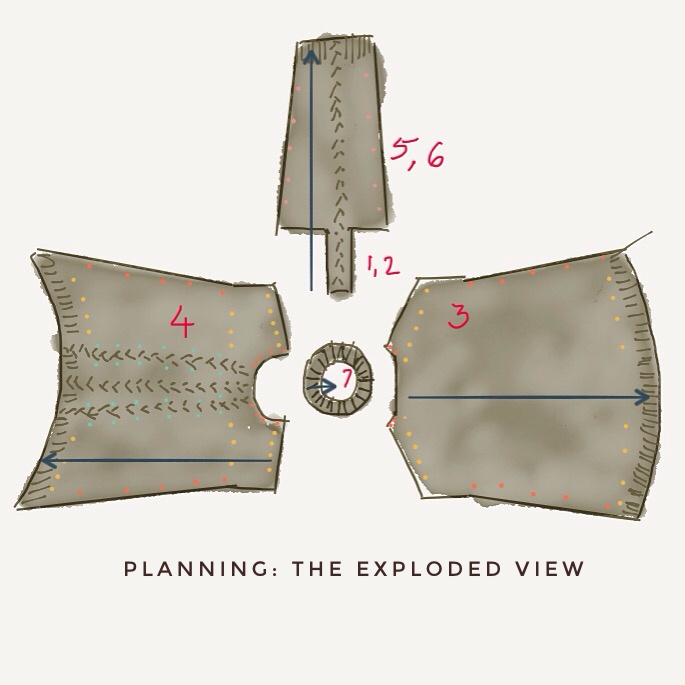
Knitting Process and Direction
1. and 2. Work saddles, centering a single pattern strip on each.
3. Pick up and knit one back shoulder, short row to shape. Increase for neck. Repeat on other side, CO stitches for the centre of the neck and join to other shoulder. Work down with increases and short rows.
4. Do the same on the front, except keep track of way more things.
5. and 6. Pick up stitches from back, knit across saddle, pick up stitches from front. Work to cuff with shaping.
7. Pick up and knit stitches around neck, rib for a couple of inches.
Of course, pretty pictures aren’t much help in the actual knitting. Here’s what the hardworking diagram looks like, before being converted to actual stitch counts:
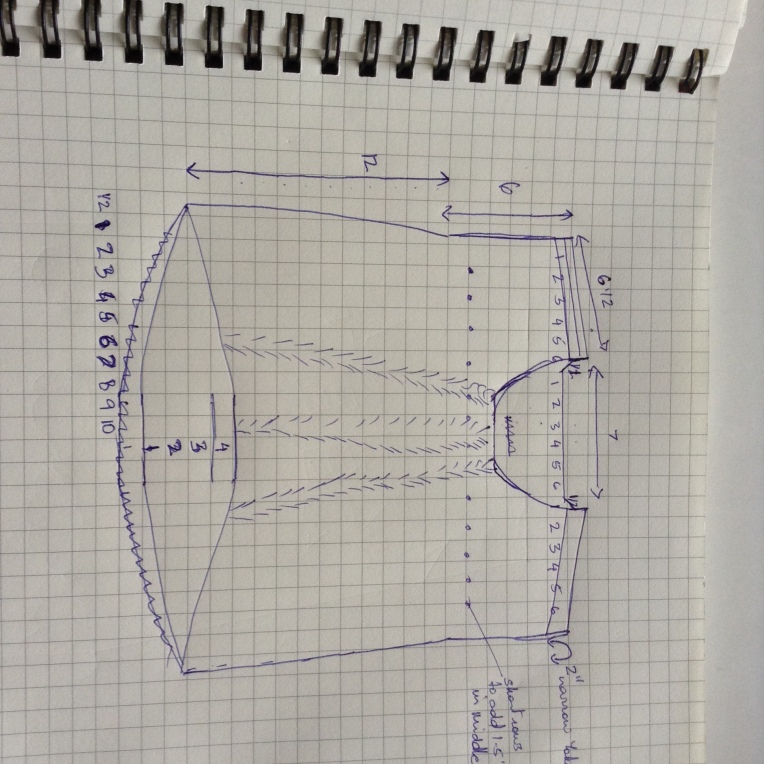
Whew, better return to the knitting!















